For the most part, you don’t need to worry about the version of .NET installed on your Windows 11/10 computer. Some applications require a specific release to run. Programmers usually need to run multiple versions of the platform to develop and deploy apps, and this is when understanding the versions of .NET Framework available on your device can come in handy. In this post, we will show you the 5 known ways to check .NET Framework version installed on Windows 11/10 PC.
How to check .NET Framework version
You can check the .NET Framework version installed on your Windows 11/10 computer in any of the following ways:
- Using Command Prompt
- Using Registry Editor
- Using PowerShell
- Using .NET Version Detector tools
- Via File Explorer.
Let’s take a look a the description of the necessary step in relation to each of the methods.
1] Check .NET version using Command Prompt
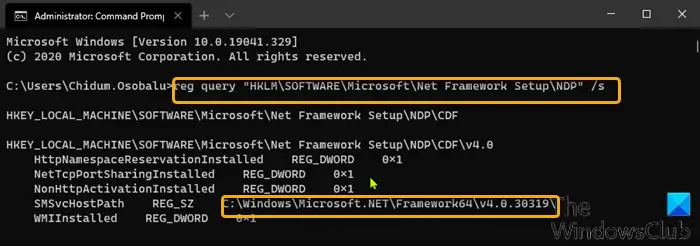
To check the version of the .NET Framework installed on Windows 10 using Command Prompt, do the following:
- Press Windows key + R to invoke the Run dialog.
- In the Run dialog box, type cmd and then press CTRL + SHIFT + ENTER to open Command Prompt in admin/elevated mode.
- In the command prompt window, copy and paste the command below and hit Enter.
reg query "HKLM\SOFTWARE\Microsoft\Net Framework Setup\NDP" /s
2] Check .NET version using Registry Editor

To check the version of the .NET Framework installed on Windows 10 using Registry Editor, do the following:
- Press Windows key + R to invoke the Run dialog.
- In the Run dialog box, type regedit and hit Enter to open Registry Editor.
- Navigate or jump to the registry key path below:
HKEY_LOCAL_MACHINE\SOFTWARE\Microsoft\NET Framework Setup\NDP
- Select the main version key – for example, v4 or v4.0.
- Select the Client key.
Note: In releases older than version 4, the key will be a number or “Setup.” For example, .NET version 3.5 includes the version number under the 1033 key.
3] Check .NET version using PowerShell
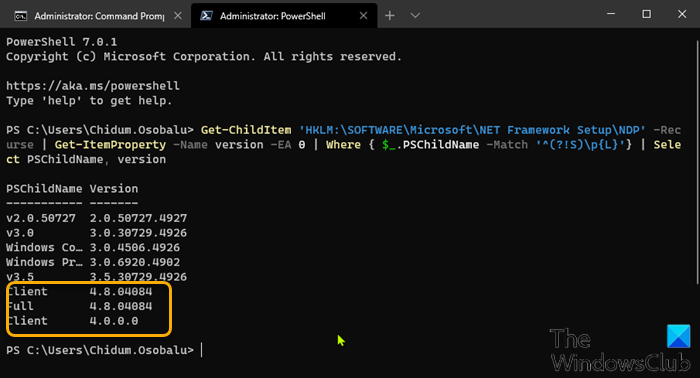
To check the version of the .NET Framework installed on Windows 10 using PowerShell, do the following:
- Press Windows key + X to open Power User Menu.
- Then press A on the keyboard to launch PowerShell in admin/elevated mode.
- In the PowerShell console, copy and paste in the command below and hit Enter.
Get-ChildItem 'HKLM:\SOFTWARE\Microsoft\NET Framework Setup\NDP' -Recurse | Get-ItemProperty -Name version -EA 0 | Where { $_.PSChildName -Match '^(?!S)\p{L}'} | Select PSChildName, version
Once the command executes, the output should reveal the information for both client and the full version of .NET installed on your device (if applicable).
Read: Troubleshoot .NET Framework Installation Issues.
4] Check .NET version using .NET Version Detector tools
DotNetVersionLister
There’s a community tool at GitHub that makes it easy to query a list of installed .NET versions on your computer.
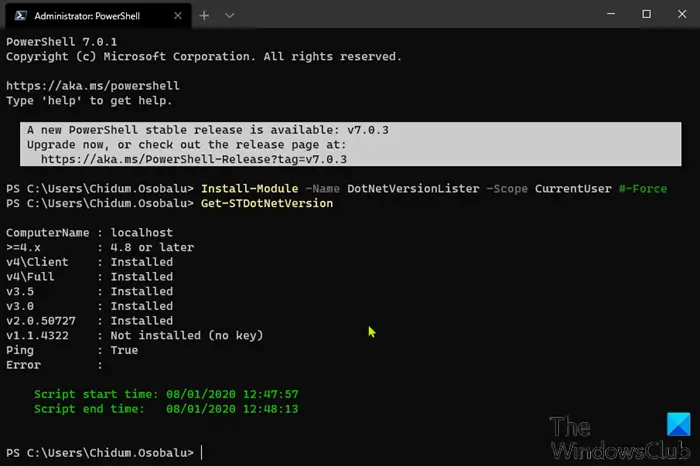
To use this DotNetVersionLister to check the .NET version installed on Windows 10 PC, do the following:
- Open PowerShell in admin/elevated mode.
- In the PowerShell console, copy and paste in the command below and hit Enter to download and install this tool on your device.
Install-Module -Name DotNetVersionLister -Scope CurrentUser #-Force
- Type Y and hit Enter.
- Next, type the following command to determine the version of .NET installed and hit Enter:
Get-STDotNetVersion
Once the command executes, the output should reveal the information for the version of .NET installed on your device.
ASoft .NET Version Detector
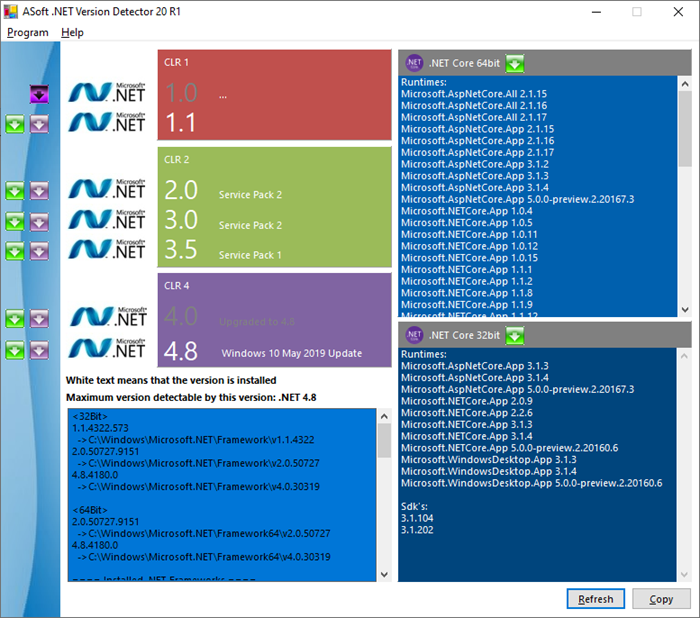
ASoft .NET Version Detector is a lightweight tool that gives information on the different versions of Microsoft .NET and .NET Core that are installed on a Windows computer. You can download it from here.
5] Via File Explorer
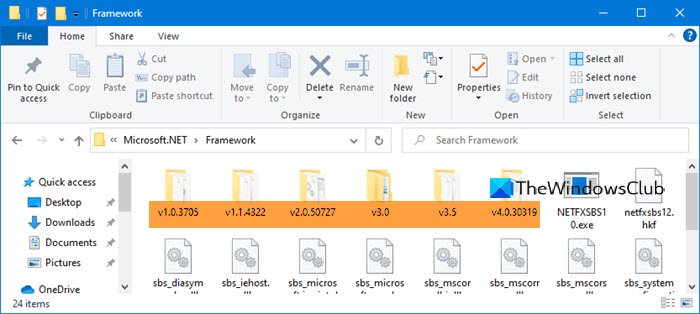
Open File Explorer and navigate to the following folder:
%windir%\Microsoft.NET\Framework\
Here, you can see all the versions that are installed.
That’s it on the ways to check the .NET version on your Windows 11/10 PC.
Read: Microsoft .NET 9.0 is now generally available for download.